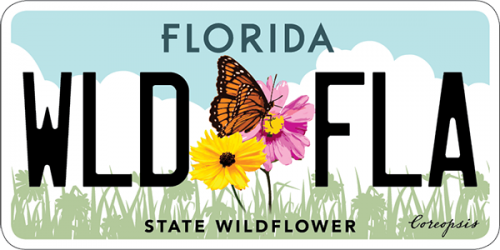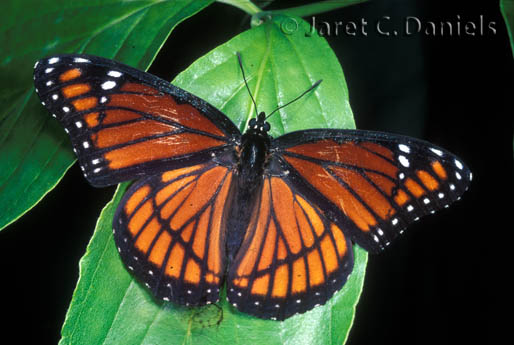- Family name: Nymphalidae/Brush-Footed Butterflies
- General description: Wings orange to mahogany with black-outlined veins and black borders enclosing small white spots. Dorsal hindwing with prominent black line through the center. Ventral hindwing as above but paler orange and with more prominent white spots in black border.
- Field Marks: orange to mahogany; hindwing with prominent black line through the center.
- Sexes: Appear similar
- Wingspan: 68-85 mm
- Life Cycle: Egg: green, laid singly on the tip of host leaves Mature larva: green-brown with white markings, a white saddle and a pair of knobby tubercles off the thorax Chrysalis: mottled brown and white
- Number of Generations: Two or more
- Flight Season: All
- Abundance: Common
- Habitat: Swamps, pond margins, stream corridors, wet roadside ditches with willows
- Larval Host Plants: Various willows (Salix spp.) including Carolina willow (Salix caroliniana) and weeping willow (Salix babylonica)
- Similar Species: Monarch, Queen
- Additional Information: Range is limited in Oregon, Utah and Washington. Two different forms occur in Florida. Individuals in northern portions of the state are primarily orange and mimic the Monarch, individuals in southern portions of the state are darker mahogany and mimic the Queen. All three species are distasteful to birds. Adults have distinctive flight pattern involving several quick wing beats followed by a short glide.
- Range in Florida
 The Florida Wildflowers & Butterflies projects at the Florida Museum are sponsored in part by the State of Florida and the Florida Wildflower Foundation, Inc.
The Florida Wildflowers & Butterflies projects at the Florida Museum are sponsored in part by the State of Florida and the Florida Wildflower Foundation, Inc.
